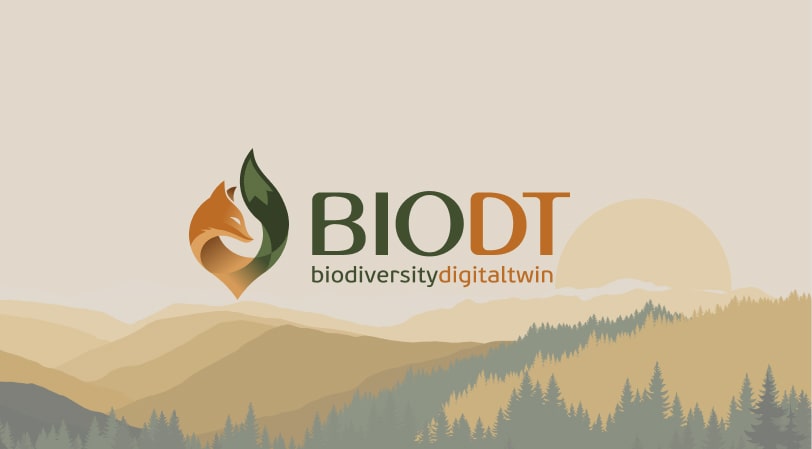
What are Digital Twins and Why do they Matter?
The concept of Digital Twins (DTs) has revolutionised the way we understand and interact with complex systems. At its core, a digital twin is a virtual representation of real-world entities and processes, continuously synchronised at specific frequencies. After being provided with the relevant data, the digital model can be utilised to conduct various simulations, analyse performance problems and create potential enhancements of the real-world entities.
Unlike simulations, Digital Twins is actually a virtual environment, which makes it significantly richer for study. Considerably different in scale, simulation can study one particular process, while a digital twin can run multiple simultaneous processes. From manufacturing, healthcare, aerospace, to biodiversity protection, Digital Twins are becoming an invaluable tool for technology development. The Europe digital twin market generated a revenue of $5,429.7 million in 2023[1]. So, how can European projects exploit DT technologies?
An example is provided by BioDT (Biodiversity Digital Twin). The project is at the forefront of leveraging DT technology to address critical challenges in biodiversity. Its current prototype used cases focus on inter-relationships between ecosystem actors including: species’ responses to environmental changes, interactions among species and with humans, genetically detected biodiversity, and dynamics and threats concerning species of policy interest. The impact of BioDT, beyond its technical innovations, also diversifies and expands biodiversity research, contributing to more nuanced policy formulation regarding biodiversity preservation and climate change mitigation.
Connecting BioDT with Other Digital Twin Initiatives
The power of digital twins lies in collaboration and interoperability. BioDT exemplifies this through its active engagement with other projects, fostering a rich ecosystem of shared knowledge and resources. Here’s how BioDT connects with key initiatives:
DTO-BioFlow
DTO-BioFlow focuses on unlocking hidden data streams in marine environments, converting diverse monitoring datasets into valuable biodiversity information. For BioDT, monitoring heterogenous biodiversity is at its core, therefore perfectly aligning between the technical aspects of both projects. The collaboration includes:
- Publishing new data streams to infrastructures like LifeWatch ERIC.
- Knowledge exchange on managing large-scale, frequently updated datasets.
- Exploring how terrestrial biodiversity models can interface with marine ecosystem models for a holistic approach to global biodiversity modelling.
Both projects uphold FAIR (Findable, Accessible, Interoperable, Reusable) data principles, emphasising robust data management and sharing practices.
DT-GEO
The Digital Twin of Geophysical Extremes (DT-GEO) develops prototypes to analyse and forecast natural disasters and hazards, including tsunamis, earthquakes, and volcanic eruptions. DT-GEO’s expertise in modelling extreme geophysical events complements BioDT’s focus on biodiversity, which hopes to mitigate certain environmental risks. Their collaboration includes:
- Developing a shared glossary of digital twin concepts and definitions to standardise communication.
- Fostering interoperability and a unified understanding across digital twin systems.
InterTwin
While BioDT has technical synergies with DT GEO and DTO-BioFlow, InterTwin presents an example of DT cross-disciplinary synergy. InterTwin presents an interdisciplinary engine for digital twins across sectors, aiming to create a framework for seamless operation and communication. Its mission to enhance interoperability supports BioDT’s efforts to break down silos between biodiversity and other domains. Their shared vision of a universal terminology across digital twins, fosters an integrated and cross-domain DT ecosystem in Europe.
FAIRCORE4EOSC
The FAIRCORE4EOSC project and BioDT have formalised their collaboration through a Letter of Intent (LoI), signed in May 2023. Together, they aim to advance open science within the European Open Science Cloud (EOSC). Key areas of synergy include:
- Metadata Schema and Crosswalk Registry (MSCR): BioDT adopts MSCR to create crosswalks between Data Catalogue Vocabulary (DCAT) 3.0 and Ecological Metadata Language (EML) schemas, promoting metadata exchange across biodiversity data catalogues.
- Enhanced Data Interoperability: Streamlining data management and exchange practices within the EOSC framework to strengthen biodiversity research.
- Community Engagement: Joint stakeholder outreach, training, and best practice dissemination, ensuring inclusive collaboration and knowledge sharing.
Looking into 2025: Collaborations ahead
BioDT’s partnerships demonstrate the potential of digital twins as transformative tools for understanding, monitoring, and controlling complex environments. By integrating expertise from various projects, BioDT contributes to a unified, interoperable framework for biodiversity and beyond.
As digital twins evolve, initiatives like BioDT, DTO-BioFlow, DT-GEO, InterTwin, and FAIRCORE4EOSC set a precedent for interdisciplinary and cross-sectoral synergy. Together, they pave the way for a more connected and informed approach to tackling the local, as well as global challenges.
Are you interested in collaborating with BioDT to help shape the future of Digital Twins? Get in touch, and let's identify the best opportunities for cooperation.
[1] https://www.grandviewresearch.com/horizon/outlook/digital-twin-market/europe
